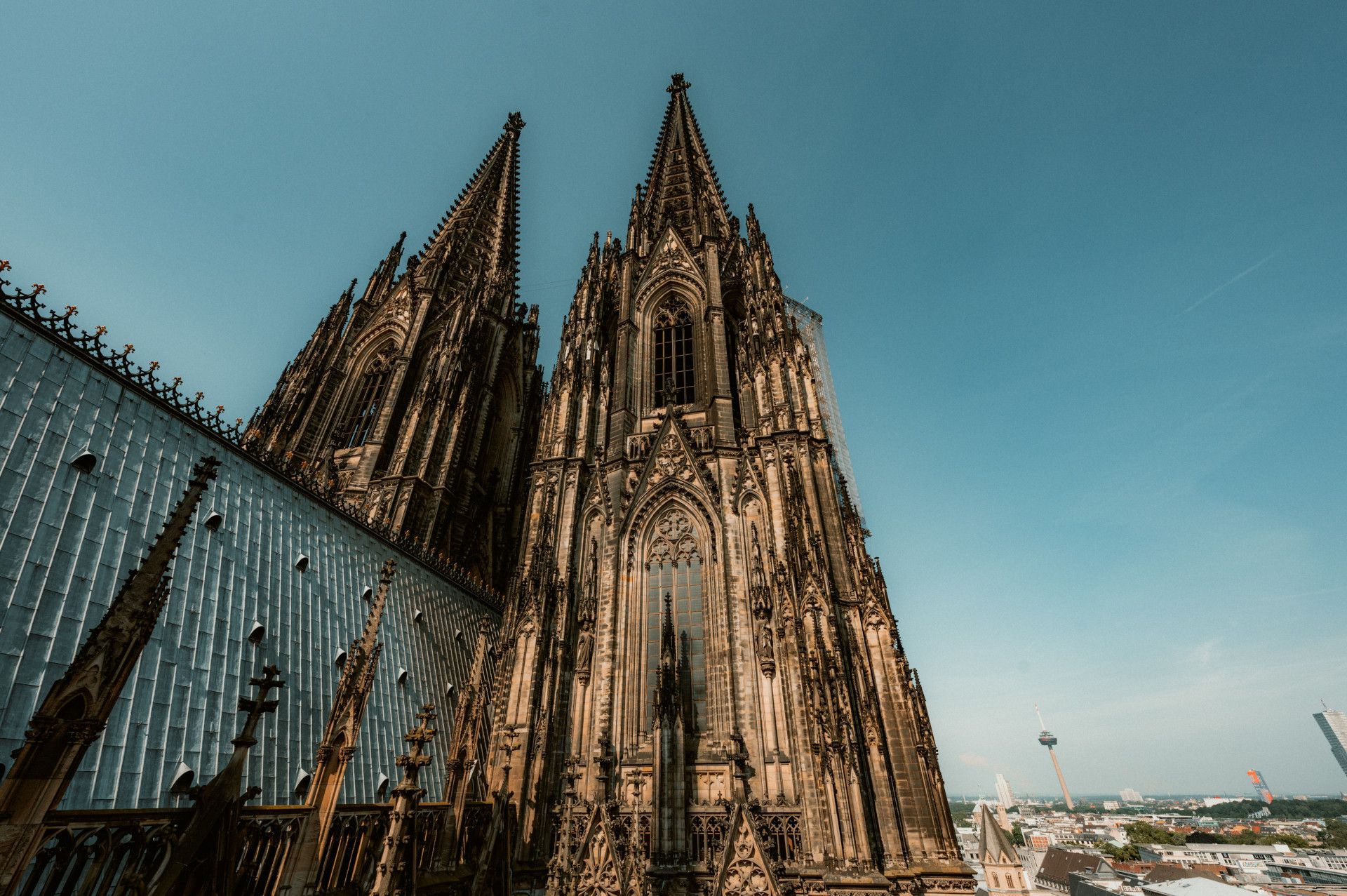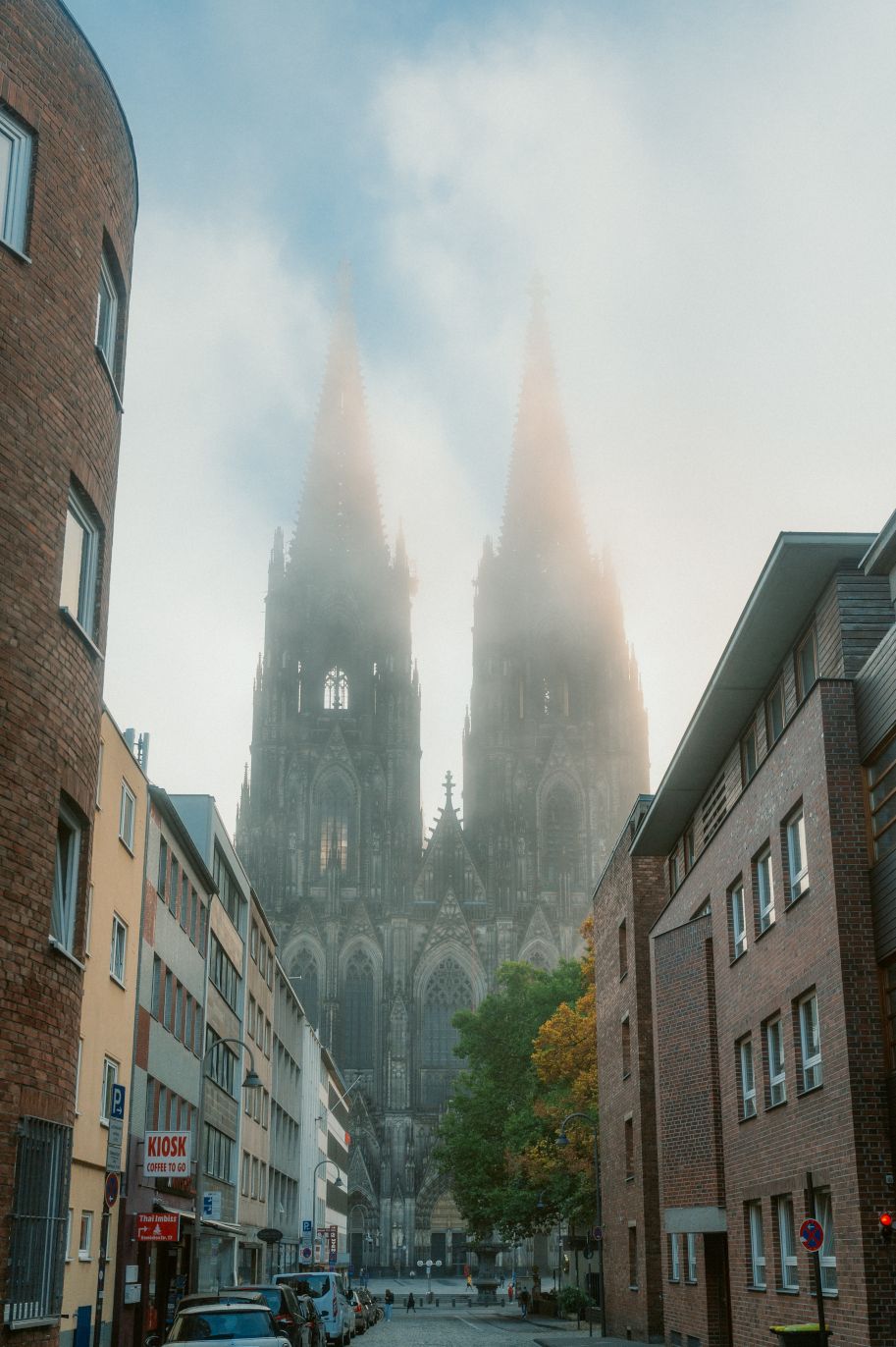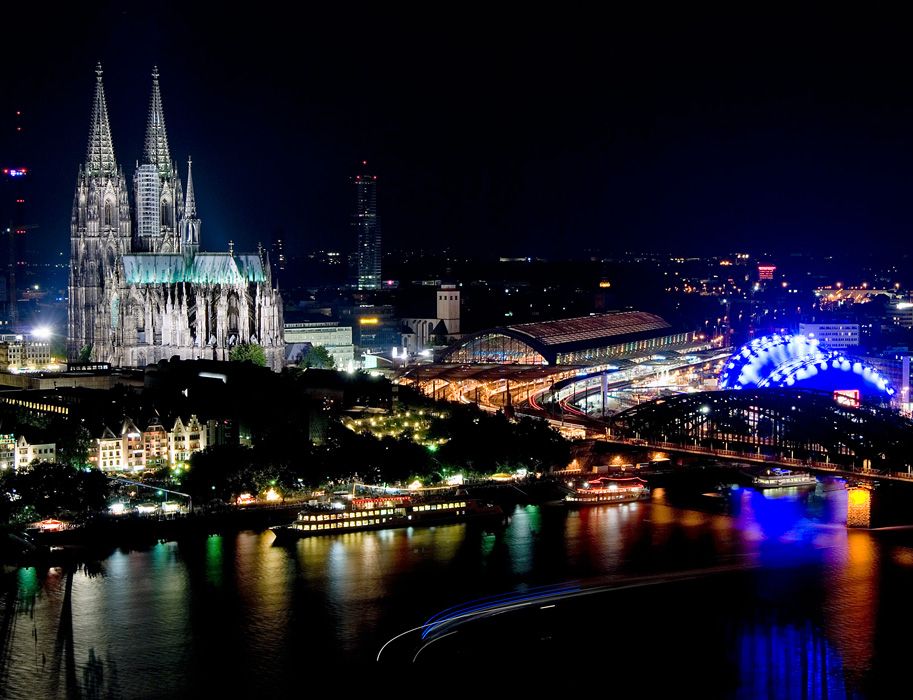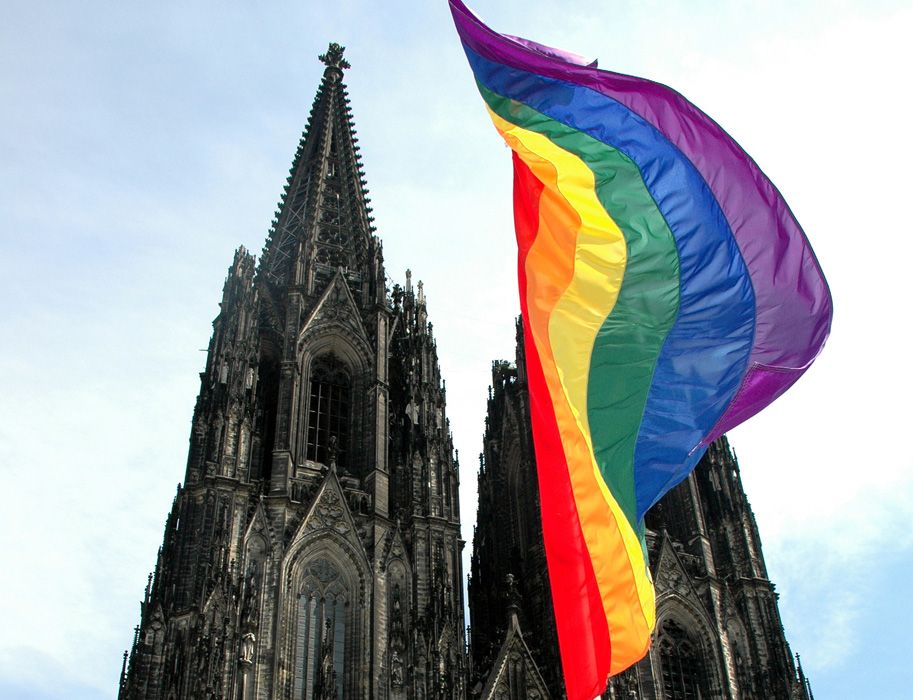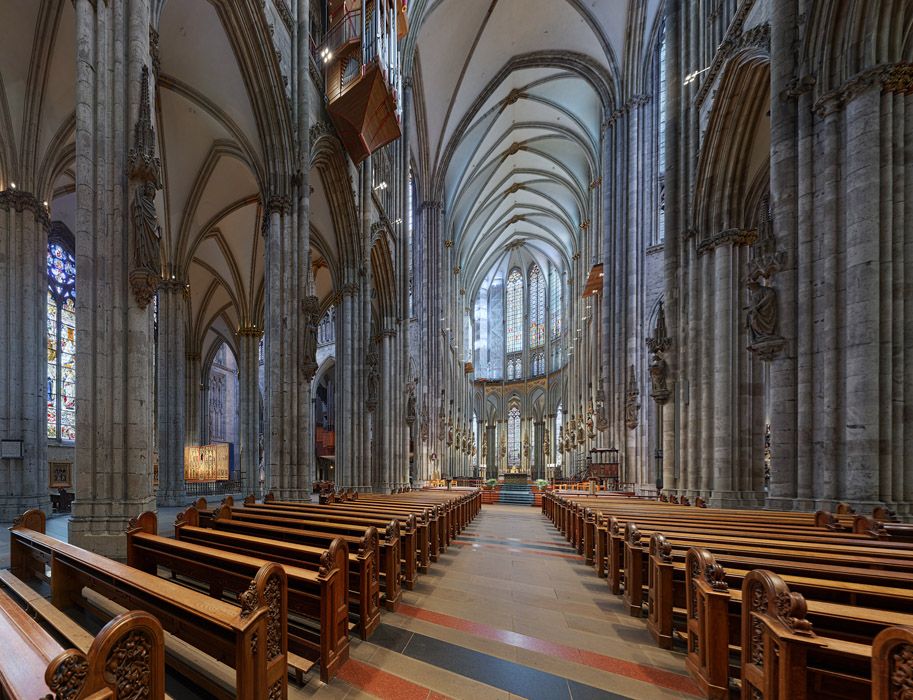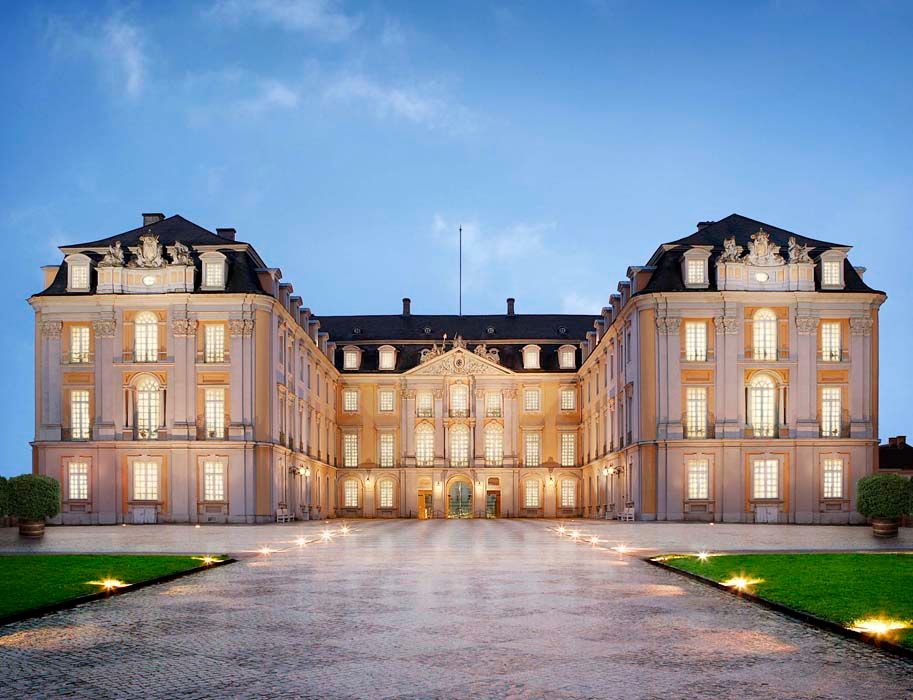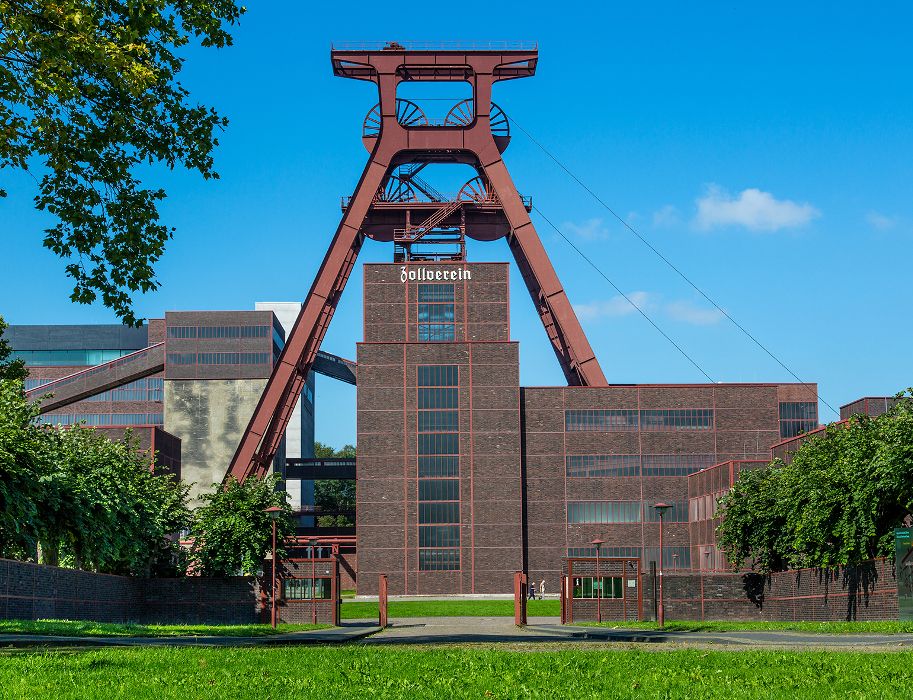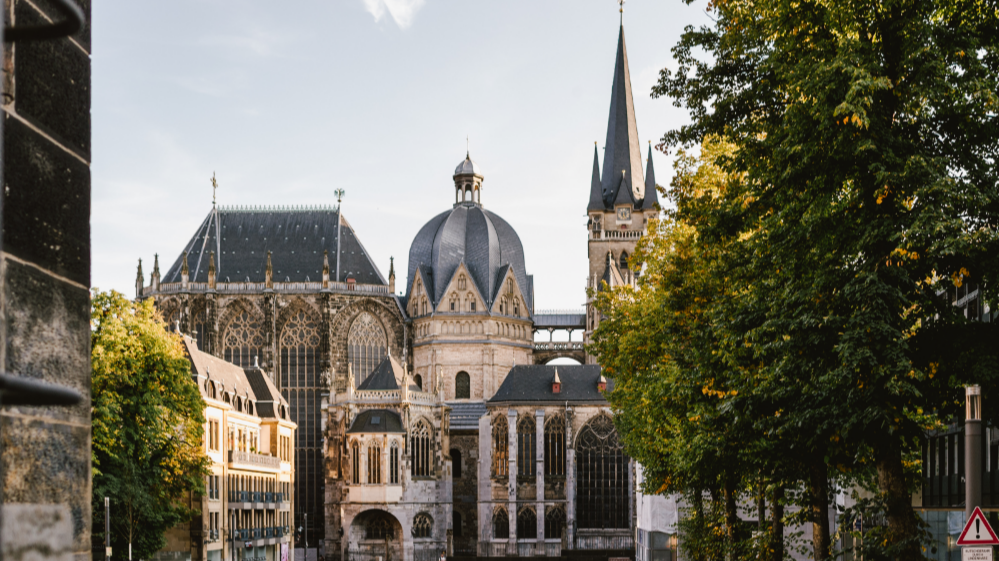The cathedral is not only the landmark of Cologne that can be seen from afar, but also the most popular sight in Germany. A trip over its roofs is a highlight.
Cologne Cathedral is popular with tourists and pilgrims alike: with over six million visitors a year, it is the most popular sight in Germany and also one of the most important pilgrimage churches in Europe. And art lovers also get their money's worth, as the church building is one of the European masterpieces of Gothic architecture.
The foundations of today's Cologne Cathedral were laid back in the Middle Ages, in 1248. Construction was halted in 1530 due to a lack of funds and the unfinished cathedral shaped the image of the city of Cologne for over 300 years. It was not until 1842 that construction could be continued and finally completed in 1880.
Precious treasures
Despite severe damage during the world wars, numerous precious works have been preserved, especially inside Cologne Cathedral, including the Shrine of the Epiphany, the largest surviving Romanesque reliquary. The bones kept in it, which are said to belong to the Three Kings, have been the destination of pilgrims and visitors from all over the world since the 12th century. Before the bones came to Cologne, the staff of St. Peter and the chain of St. Peter were the main relics of the great church, which can still be viewed today. The Gero crucifix, created around 980, is also of particular significance in terms of art and church history, as it is considered the first monumental depiction of the crucified Jesus in the West. The apocalyptic lamb on the book with seven seals from 1775 is also a sacred treasure - a special testimony to medieval blacksmithing.
The church treasure of Cologne Cathedral is housed in its cathedral treasury, which is located in an underground vault. Some of the precious vestments kept here are still used today, for example during church services on special feast days. A large emerald cross from the treasure is traditionally displayed on All Saints' Day.
Cologne Cathedral has been on the UNESCO World Heritage List since 1996. A special tip for those with a head for heights is a guided tour over the roofs of the church. Guided tours at night or to the excavations under the cathedral are also possible.
